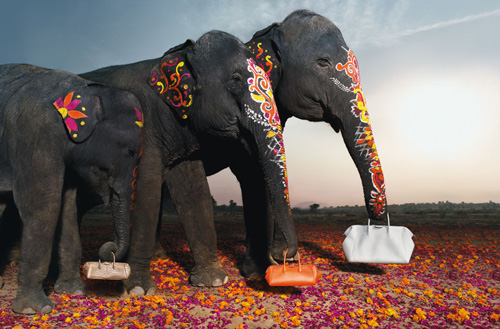In the part 1, I discussed how many luxury brands are failing across Asia as they treat Asian consumers as a homogeneous group and how it led my co-authors and I to examine this phenomenon in-depth. Using the value perceptions framework and theory of impression management, we discovered some very interesting differences among consumers in three largest emerging economies of Asia, namely, China, India and Indonesia.
In the first part, I wrote about what Indian consumers’ value the most and how to specifically market to these consumers. In this part, I will offer comparative findings regarding the consumers in these 3 mega luxury markets and how can such findings help managers customize their strategic response.
So, what Asian consumers value the most?
Indian Consumers
In India, the construct of other-directed symbolism is found to be significantly related to luxury value perceptions, conforming to the crucial role of the instrumental aspect of impression management. Thus, the Indian luxury brand consumers seem to be influenced by what others think of them and therefore consumes in a way to influence others in order to achieve societal acceptance, reflecting the hierarchical nature of the society (vertical collectivist). They use luxury brands to indicate social status. More importantly, luxury brands are used in India as a means to symbolize achievement, wealth and prestige.
Indonesian Consumers
While Indians were predominantly influenced by other-directed symbolic value, luxury value perception of the Indonesian consumers, on the other hand, is influenced by the self-directed symbolism of luxury brands. Self-directed symbolism resonates with expressive self-presentation, wherein the individual seeks to enhance the self through consumption. This result, while counterintuitive to the general perception of Indonesia as a collectivistic society, can be explained from the lens of equality perspective (horizontal collectivist). While Indonesian consumers in general would see themselves as similar to others, they will not submit to in-group authority if the consumption choice is distasteful to them. On the other hand, for Indians luxury goods shopping is not an individual experience. It is rooted in the societal process wherein family and friends go together and the decision is a group rather than an individual decision and hence, stronger other-directed rather than self-directed symbolism is observed.
The Indonesian consumers also show significant impact of experiential value on their luxury value perceptions, which is consistent with the earlier result relating to self-directed symbolism. Experiential value perceptions represent store-level and personal pleasure derived from the consumption of luxury brands. In this regards, Indonesian consumers use luxury shopping as a way to forget their problems. The differences in the symbolic value perceptions of the Indian and Indonesian customers are also consistent with what is observed in prior literature which shows that social and self-directed behaviour vary as per cultural differences.
Chinese consumers
Functional value perception has a significant impact on luxury value perceptions among Chinese consumers. However, as a value perception this was significant across all three countries in the study. This result shows that consumers evaluate the functional value of a luxury brand in terms of the status it brings and therefore are willing to pay a premium price. The three countries have witnessed rapid economic growth over the last two decades and a consequential increase in aspirational consumers. These consumers associate prestige through the price and product quality perceptions and therefore buy luxury brands, which are perceived to accord higher status in the eyes of the society.
How to customize your luxury strategy in Asia?
Marketers can benefit from knowledge about the differences (and similarities) in constituent luxury value perceptions and customize or standardize their marketing strategy accordingly. For instance, a luxury brand positioning strategy in Indonesia should emphasize how the brand could enhance a consumer’s self-image and could make them feel good about themselves, as well as focus on the experiential aspects of buying and using the brand. Moreover, a brand will have to offer a unique store-level experience to Indonesians. On the other hand, a luxury brand in India should focus more on how the brand could add to the buyers’ social status. Marketing a luxury brand to Indian consumers by stating the European heritage and highlighting foreign origin may not work as these consumers are well-travelled and aware of global trends. Moreover, they have a strong Indian luxury heritage connection. So, a luxury brand which wants to establish itself in Indian market will have to work on social acceptability and symbolism of achievement, prestige and wealth. This wealth connection will also get integrated with the functional value wherein Indian consumers associate higher price with high quality and desire more that is hard to get. The higher price and social symbolism offers a significant meaning to a luxury brand for Chinese consumers also. Thus, the luxury brand marketer should customize their positioning and communication strategies for symbolic and experiential value perceptions across the three countries. Given that functional value has a significant impact on luxury value perceptions in all three countries, marketers could achieve scale economies by standardizing their strategy for this dimension of luxury value perception.
Reference:
Shukla, Paurav, Jaywant Singh, Madhumita Banerjee (2015), “They are Not All Same: Variations in Asian Consumers’ Value Perceptions of Luxury Brands,” Marketing Letters, Forthcoming. http://dx.doi.org/10.1007/s11002-015-9358-x








